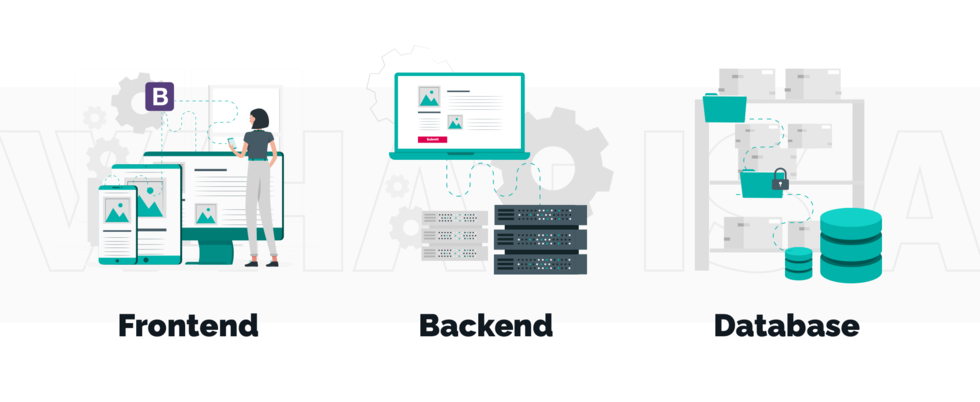
Freelance Web Development Choosing the Right Technology Stack
In the realm of freelance web development, where creativity knows no bounds, choosing the right technology stack is akin to selecting the perfect tools for an artisan's masterpiece. With a myriad of options at your disposal, navigating this landscape can be perplexing. Fear not, for we shall be your guide on this journey, shedding light on the path to crafting exceptional web solutions.
Understanding the Technology Stack
Deciphering the Terminology
In this labyrinth of programming jargon, let's start by unraveling the meaning of a "technology stack." Essentially, it's a collection of software tools and programming languages used to build web applications. Understanding the various components of a stack is crucial before diving into the decision-making process.
The Frontend and Backend Divide
Before making any decisions, grasp the distinction between frontend and backend technologies. The frontend is what users see and interact with, while the backend handles data processing and server operations. Both are equally vital in web development.
Factors Influencing Your Choice
Project Scope and Requirements
Consider the scope of your project and its specific requirements. Are you developing a simple portfolio website or a complex e-commerce platform? Your project's nature will dictate the stack that best suits your needs.
Your Skillset and Team
Assess your own expertise and that of your team, if applicable. Opting for technologies you are proficient in can expedite development and minimize errors. On the other hand, if you're open to learning, this may be an opportunity to expand your skillset.
Performance and Scalability
Performance is paramount. A slow-loading website can deter users. Evaluate the scalability of your chosen stack to ensure it can handle increased traffic as your project grows.
Budget Considerations
Freelancers often work with limited budgets. Selecting open-source technologies or platforms with minimal licensing costs can be a strategic move.
Community Support
Having a robust community backing a technology stack can be a lifesaver when you encounter issues or need guidance. Explore the community around your prospective stack.
Exploring Popular Technology Stacks
LAMP Stack
The Linux, Apache, MySQL, and PHP (LAMP) stack is a classic choice. It's known for its flexibility and widespread use in web development.
MEAN Stack
The MEAN stack comprises MongoDB, Express.js, AngularJS, and Node.js. It's ideal for building real-time applications and offers a seamless JavaScript-based development experience.
MERN Stack
Similar to the MEAN stack, the MERN stack swaps out AngularJS for React.js. It's particularly favored for creating dynamic and interactive user interfaces.
Ruby on Rails
Ruby on Rails is celebrated for its simplicity and rapid development capabilities. It's an excellent choice for startups and smaller projects.
Django
Django is a Python-based framework known for its clean and pragmatic design. It's renowned for its emphasis on reusability and rapid development.
Making the Final Decision
Prototype and Test
Before committing to a stack, consider building a prototype to assess its suitability. Testing will reveal any compatibility issues or limitations.
Seek Expert Advice
Consulting with experienced developers or seeking mentorship can provide valuable insights into making the right choice.
Stay Adaptable
The tech world evolves rapidly. Be prepared to adapt and learn new technologies to stay competitive in the freelance web development landscape.
Don't Fear Mistakes
Mistakes are stepping stones to mastery. Embrace them as opportunities to learn and refine your skills.
As we conclude our journey through the labyrinth of technology stacks, remember that there is no one-size-fits-all solution. Your choice should align with your project's unique demands and your personal aspirations as a freelance web developer.
Frequently Asked Questions
Q1: Is there a universal best technology stack?
There is no universal best stack. The right choice depends on your project's requirements and your team's expertise.
Q2: Should I always go for the latest technologies?
Not necessarily. Using proven technologies can provide stability, while experimenting with new ones can bring innovation.
Q3: How can I keep my skills up-to-date?
Regularly engage in online courses, attend webinars, and read tech blogs to stay informed about industry trends.
Q4: What if I make the wrong choice?
Don't fret. Learning from mistakes is an integral part of a developer's journey. You can always pivot to a different stack if needed.
Q5: How can I find a supportive developer community?
Platforms like GitHub and Stack Overflow are excellent places to connect with fellow developers and seek assistance.
Q6: Can I mix and match technologies from different stacks?
While it's possible, it can complicate your project. It's generally advisable to stick to one stack for consistency.
summary: Choosing the right technology stack for freelance web development is a crucial decision. Factors like project scope, your skills, and budget influence this choice. Popular stacks like LAMP, MEAN, MERN, Ruby on Rails, and Django offer diverse options. Prototype, seek advice, stay adaptable, and embrace mistakes in your journey. Remember, there's no universal best stack; it depends on your project's needs.
For More Articles you can go through these links:-
Freelance Web Developers Harnessing the Power of SEO
Freelance Web Development Should You Specialize or Generalize
How to Find High-Paying Web Development Clients as a Freelancer
Creating a Winning Proposal Freelance Web Development Contracts
Staying Productive and Avoiding Burnout as a Freelance Web Worker
